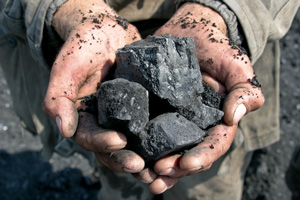Coal Declining Due to Economics, Not Regulation
St. Louis Fed On the Economy December 7, 2017

Cheaper alternative energies, not increased regulation, are the main factors driving the decline of U.S. coal consumption and production, according to a recent Economic Synopses essay.
Economist Paulina Restrepo-Echavarria, Research Associate Brian Reinbold and Senior Associate Data Specialist Maria Arias explored how improved technologies that have reduced the cost of alternative energies like natural gas have been the main reason for the decline of the U.S. coal industry.
“Some have attributed coal’s misfortune to increased regulation on carbon emissions,” according to the authors. “Although regulation increases costs for coal producers, coal’s main problem is technology that has reduced the cost of competing sources of energy.”
Depressed global demand for coal has driven down prices and hurt producer profits. This, in turn, has decimated U.S. coal mining employment, which is down 42 percent from its high in 2011.
Natural Gas Prices
Despite lower prices, demand has not been sparked for coal amid competing sources of energy. For example, natural gas prices have fluctuated between $2 and $4 per MMBtu during the past three years and are currently 77 percent below their June 2008 peak of nearly $13 per MMBtu. 1
“These low prices have shifted energy consumption away from coal to natural gas,” the authors noted.
Natural Gas Consumption Outpaces Coal
During the past 10 years, the share of natural gas consumption in the U.S. has risen largely at the expense of coal:
- In 2006, coal and natural gas consumption each represented close to 22 percent of primary U.S. energy consumption.
- By 2016, coal consumption had declined to 15 percent, while natural gas increased to 29 percent.
The authors noted that the decline in natural gas prices has not affected the ability of natural gas firms to stay in business. A number of factors have helped, including the development of wells that have better technology.
“Despite being more expensive to drill, these wells have increased productivity and efficiency, lowering the market price,” the authors wrote. “These efficiency gains have allowed natural gas to remain profitable and have done little to deter production.”
Looking Ahead
It is likely that production of natural gas will at least remain steady for the near future, Restrepo-Echavarria, Reinbold and Arias noted. They cited the second-quarter Dallas Fed Energy Survey, which revealed exploration and production firm executives reported the third straight increase in quarterly production, albeit at a slower pace.
“Since 2015, U.S. natural gas production has been around 90 billion cubic feet per day, and extraction of natural gas has increased 40 percent since 2006,” the authors said. “It appears that natural gas (as well as renewables) will continue to displace coal in energy consumption.”
Notes and References
1 MMBtu stands for 1 million British thermal units (BTU). A BTU is a measure of the energy content in fuel.
Additional Resources
- Economic Synopses: The Decline of Coal
- On the Economy: What’s the Future for Coal?
- On the Economy: China, Commodities and Emerging Economies

